|
Tao Te Ching
THE TAOISM OF LAO TZU
|
Tao Te Ching
|
The Book
The Taoism of Lao Tzu Explained. The great Taoist philosophy classic by Lao Tzu translated, and each of the 81 chapters extensively commented. Click the image to see the book at Amazon (paid link). |
Teacher and Student
The Eastern tradition is essentially focused on transmitting the wisdom of old to the coming generations. Everybody is primarily a student and a teacher, passing on knowledge and understanding in a chain without beginning or end. What we learn from our parents, we pass on to our children.
Nothing is more important.
In this chapter, Lao Tzu stresses this basic duty shared by all. The teacher must teach all he or she knows, the student must be devoted to learning what is taught. Whatever reason they might have for neglecting this duty, they are mistaken.
Teaching is not the same as indoctrination. That would be intellectual molestation. True wisdom doesn't need force. It convinces by its own merit. Learning is no passive memorizing of the thoughts of others. It has to be done by active thinking, questioning, and coming to one's own conclusions.
But if nothing is taught, then there is no basis for conclusions, and if nothing is learned there is nothing to conclude.
Good Skills
When Lao Tzu begins with a list of what good skills accomplish, he explains what can be reached by proper teaching. What we learn in the process is far from useless. Although teaching might be done mainly in theory, the benefits are practical as well.We excel if we pay attention to just about everything, and we progress from generation to generation by passing on our knowledge and our experiences.
Thereby, we follow the light of every new dawn, when days follow one another in the same cyclic progression that generations do.
The good and bad used in this chapter are not necessarily moral judgments on character, like we mostly use the words in the Western tradition.
The Chinese word for good, shan, relates to skill, excellence, and being in accordance with nature, but also kindness. The expression for bad is simply a negation of good, pu shan, which is somebody lacking these qualities. No ill will is assumed.
So, teaching is to help the student gain what was lacking.
NEXT
Tao Te Ching Explained
Preface
Introduction
Literature
translated and explained by Stefan Stenudd.
1 |
2 |
3 |
4 |
5 |
6 |
7 |
8 |
9 |
10 |
11 |
12 |
13 |
14 |
15 |
16 |
17 |
18 |
19 |
20 |
21 |
22 |
23 |
24 |
25 |
26 |
27 |
28 |
29 |
30 |
31 |
32 |
33 |
34 |
35 |
36 |
37 |
38 |
39 |
40 |
41 |
42 |
43 |
44 |
45 |
46 |
47 |
48 |
49 |
50 |
51 |
52 |
53 |
54 |
55 |
56 |
57 |
58 |
59 |
60 |
61 |
62 |
63 |
64 |
65 |
66 |
67 |
68 |
69 |
70 |
71 |
72 |
73 |
74 |
75 |
76 |
77 |
78 |
79 |
80 |
81 |
Tao Te Ching Explained
James Legge's Tao Te Ching
Aleister Crowley's Tao Te Ching
The 1st Chapter of Tao Te Ching in 76 Versions
Lao Tzu — Legendary Author of Tao Te Ching
My Taoism BooksClick the image to see the book at Amazon (paid link).
The Taoism of Lao Tzu Explained. The great Taoist philosophy classic by Lao Tzu translated, and each of the 81 chapters extensively commented. |
About Cookies
My Other Websites:
I Ching Online
The 64 hexagrams of the Chinese classic I Ching and what they mean in divination. Try it online for free.
Qi Energy Exercises
The ancient Chinese life energy qi (chi) explained, with simple instructions on how to exercise it.
Life Energy
The many ancient and modern life force beliefs all over the world explained and compared.
Taoismen på svenska
Other Books by Stefan Stenudd
Click the image to see the book at Amazon (paid link).
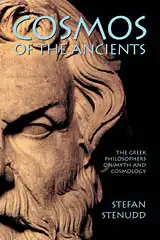 Cosmos of the Ancients
Cosmos of the Ancients
The Greek philosophers and what they thought about cosmology, myth, and the gods.
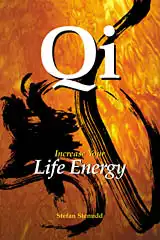 Qi — Increase Your Life Energy
Qi — Increase Your Life Energy
The life energy qi (also chi or ki) explained, with exercises on how to awaken, increase and use it.
 Aikido Principles
Aikido Principles
Basic concepts of the peaceful martial art. Aikido principles, philosophy, and fundamental ideas.
 Life Energy Encyclopedia
Life Energy Encyclopedia
Qi, prana, spirit, ruach, pneuma, and many other life forces around the world explained and compared.
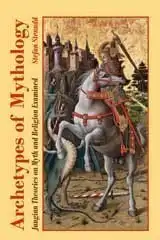 Archetypes of Mythology
Archetypes of Mythology
Jungian theories on myth and religion examined, from Carl G. Jung to Jordan B. Peterson.
 Stefan Stenudd
Stefan Stenudd
About me
I'm a Swedish author and aikido instructor. In addition to fiction, I've written books about Taoism and other East Asian traditions. I'm also an historian of ideas, researching ancient thought and mythology. Click the image to get to my personal website.Contact

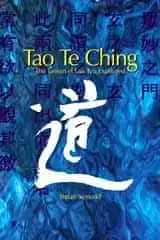 Tao Te Ching
Tao Te Ching Tao Quotes
Tao Quotes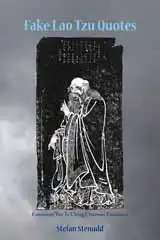 Fake Lao Tzu Quotes
Fake Lao Tzu Quotes